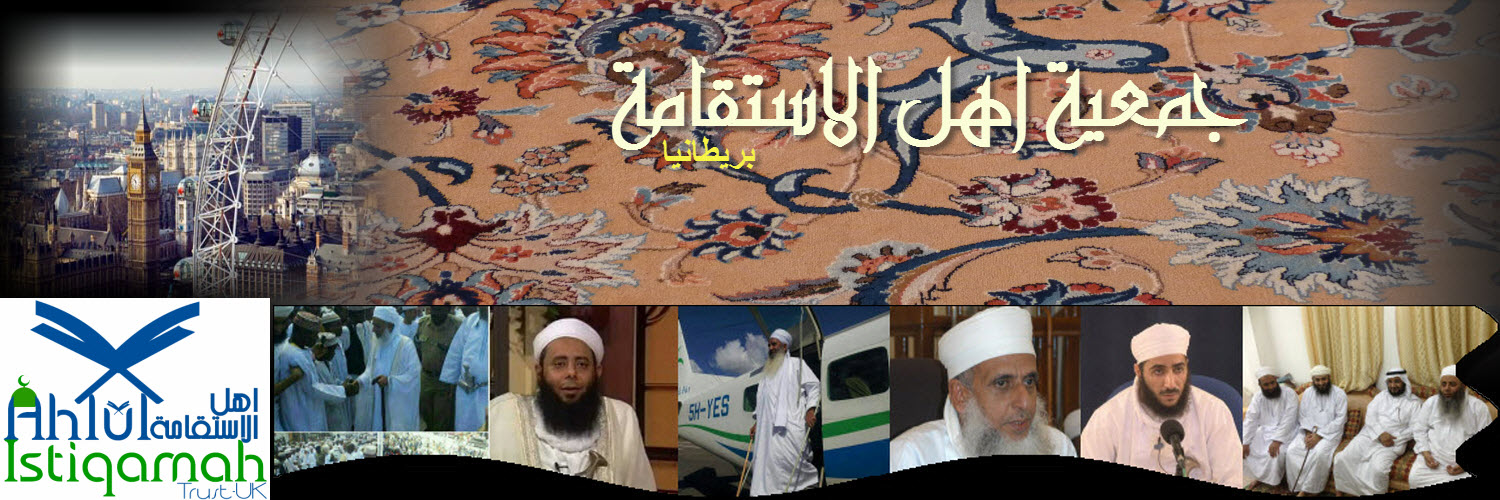Ibadhism
Ibadhism: an Islamic Sect!
Article Index
Page 2 of 2
The adherents of the Ibadhi school still form a number of independent communities holding a fast to its teachings. They are now found in the following countries:
Oman: The majority of the Omani population are Ibadhis, and they formed a state independent from the Caliphate succession since the Ummayad’s reign until this time. Sometimes it follows the Imamate system and sometimes the Royalist, and sometimes it divides into two states —the Imamate and the Royalist. (At the present time there is only the Royalist state).
The educational activities flourished in (Oman) and great leaders emerged therein and seventy volumes of encyclopedia of knowledge were written and are still waiting for publication.
The educational activities flourished in (Oman) and great leaders emerged therein and seventy volumes of encyclopedia of knowledge were written and are still waiting for publication.
Zanzibar: The majority of the Zanzibar population were Ibadhis and they had the Royal Government. They had good activities in spreading the Islamic culture, and some of the Sultans took to themselves the responsibility of publishing books on religion, translation, tradition (Hadith), and history. The people of Zanzibar had extensive influence in spreading Islam in East, Central and because of the good economic relations which bound them with those areas. The Sultanate of Zanzibar formed with strong defensive power to protect the seaports lying on the Indian Ocean.
Libya: The majority of the people of Libya were Ibadhis, but they shrank and only remained in the mountains of Nafusah and in Zuwarah. The Ibadhis in the western side of established states in broken periods between the years 135-155 A.H. Three Imams reigned those states, and good news was received about them in straightness, respect and justice, and although the period of reign of each of them was short, they endeavoured recording correct assessment for what they could do had the period of their rule become longer.
The Libyan Ibadhis had clear educational activities, particularly during the period between the third and the tenth centuries. Many scholars and leaders became famous and they left behind many valuable publications.
The Libyan Ibadhis had clear educational activities, particularly during the period between the third and the tenth centuries. Many scholars and leaders became famous and they left behind many valuable publications.
Tunisia: The majority of the people of Tunisia were Ibadhis but they faded away and the only remaining ones are found in Jerba Island.
The Ibadhis in that area had flourishing educational activities, and educational societies for writing books were formed. The first society had seven scholars and it was formed at the advent of the fifth century A.H. This society contributed in writing the religious encyclopedia comprising twenty five volumes; and it was given the title of “Diwan of the Elders”. This Diwan is considered one of the important references of the Ibadhi jurisprudence. It is still preserved in private libraries, and perhaps some of its volumes were found in the Egyptian library. Thereafter the Diwan Al- Azaba was written and ten scholars participated. As for individuals who wrote books, they are many, and the concern of the people of this region in the history of Ibadhis was greater than the others.Algeria: The majority of Algerian people were Ibadhis. They established a state between the years 160-296 A.H. and six leaders (Imams) ruled it in succession. The state was known as Rostamic Empire. Its influence covered, in addition to a majority of Algeria, southern Tunisia and the western region of Libya.
The state witnessed much development and prosperity. Education was made nation-wide in that mosques and schools were built. The leaders acquired much education and piety and most of them worked in teaching and some of them in writing books.
After the downfall of the Rostamic Empire, the Ibadhis resorted to the oasis, and they had in some of these oasis prosperous life. Thereafter, they suffered hard conditions, some of them were caused by people and some by the nature. Thus, they pulled away to Warjalaan and Wadi Mzab where preserved a system of culture rarely found in other oasis.
The areas settled by the Ibadhis in Algeria were yearning for tireless educational activities, and in some of the oasis the educational system was arranged and became known as the Azaba system. It was later on improved and became a cultural, administrative and social system; and some of the contents of the system are still being applied.
The state witnessed much development and prosperity. Education was made nation-wide in that mosques and schools were built. The leaders acquired much education and piety and most of them worked in teaching and some of them in writing books.
After the downfall of the Rostamic Empire, the Ibadhis resorted to the oasis, and they had in some of these oasis prosperous life. Thereafter, they suffered hard conditions, some of them were caused by people and some by the nature. Thus, they pulled away to Warjalaan and Wadi Mzab where preserved a system of culture rarely found in other oasis.
The areas settled by the Ibadhis in Algeria were yearning for tireless educational activities, and in some of the oasis the educational system was arranged and became known as the Azaba system. It was later on improved and became a cultural, administrative and social system; and some of the contents of the system are still being applied.
The name Ibadhiyah applies to a Muslim group, which was considered by most writers as a moderate branch of the Kharijite (Khawarij) movement. As for non-Ibadhi Muslim scholars, they always regarded Ibadhis as extreme Kharijites and heretics, and most of them did not pay any serious attention to studying Ibadhi doctrine deeply through its own sources and forming a clearer image of the Ibadhi School.
It was only recently that the Ibadhi School was included among the Islamic schools represented in the new Encyclopaedias of Islamic law appearing in Egypt and Kuwait. This interesting event came about as a result of the continuous Ibadhi activities directed towards gaining better understanding from the neighbouring Muslims. These activities were started by Sulaiman Basha al-Baruni of Jabal Nafusah, who was an active Muslim politician and played a major part in the fighting against the Italian invaders of Libya in 1911. He stood for better understanding between Muslims, and was one of the earliest voices to invite Muslims to forget the differences caused by conflict of opinion among the original masters of their Schools.
It was only recently that the Ibadhi School was included among the Islamic schools represented in the new Encyclopaedias of Islamic law appearing in Egypt and Kuwait. This interesting event came about as a result of the continuous Ibadhi activities directed towards gaining better understanding from the neighbouring Muslims. These activities were started by Sulaiman Basha al-Baruni of Jabal Nafusah, who was an active Muslim politician and played a major part in the fighting against the Italian invaders of Libya in 1911. He stood for better understanding between Muslims, and was one of the earliest voices to invite Muslims to forget the differences caused by conflict of opinion among the original masters of their Schools.
However, signs of such attention to Ibadhi studies have started to appear in modern universities through contemporary scholars who were no doubt directed towards Ibadhi studies through the interest and contribution of the European scholars.
References:
Ibadhism a Moderate Sect of Islam; by Ali Yahya Muammar
Studies in Ibadhism; by Amr Ennami








